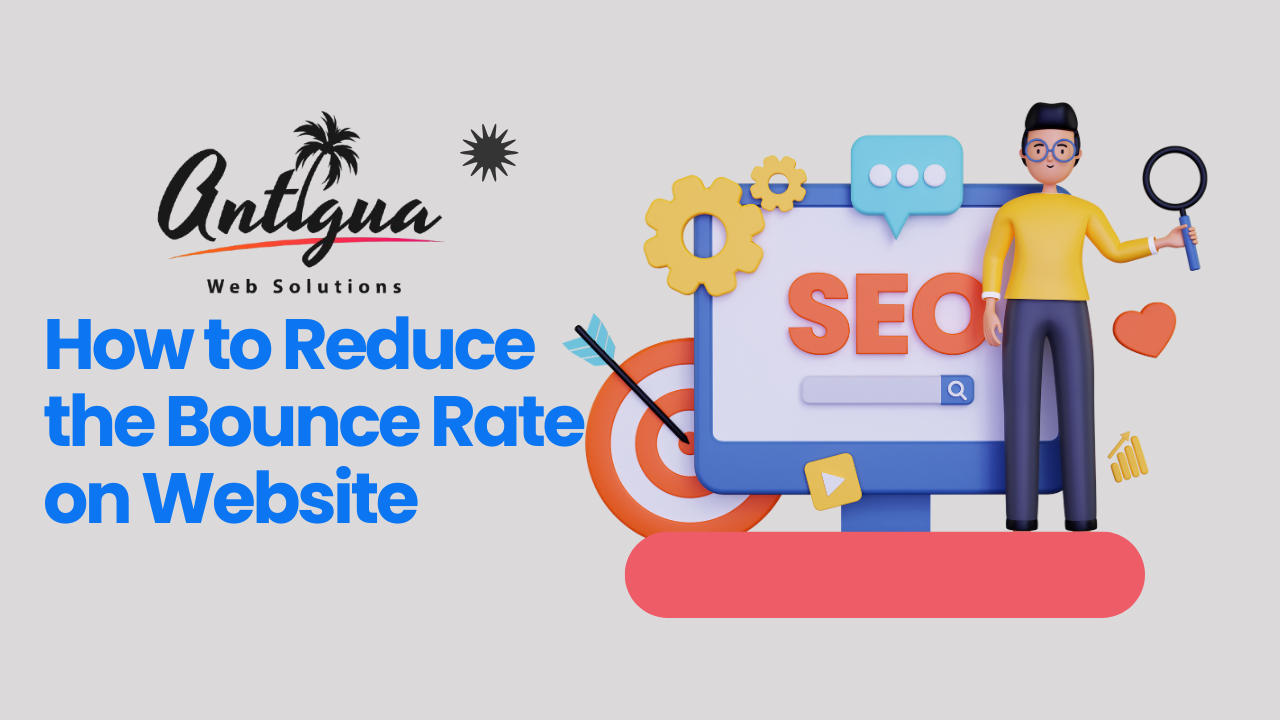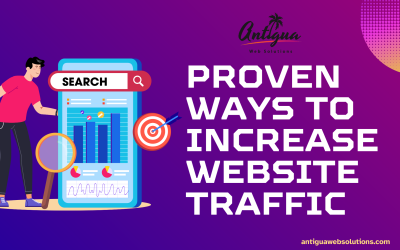In 2025, creating an engaging and user-friendly website is crucial for business success. A high bounce rate indicates that users are leaving your site without interacting, which can negatively impact SEO, user experience, and conversions. Understanding how to reduce bounce rate on website is essential to ensure your site performs at its best. This guide covers actionable strategies, tricks to reduce bounce rate, and tools like reduce bounce rate plugins and scripts that can help.
What is Bounce Rate?
Bounce rate is the percentage of website visitors who leave a page without taking any action, such as clicking links, filling out forms, or navigating to other pages. It reflects how well your website engages users. A high bounce rate often indicates issues like irrelevant content, poor user experience, slow loading times, or technical problems. Conversely, a low bounce rate suggests that visitors find your site valuable and stay longer. Tracking and optimizing bounce rate is crucial for improving engagement, enhancing SEO performance, and increasing conversions, making it an essential metric for assessing a website’s effectiveness and user satisfaction.
Bounce rate refers to the percentage of visitors who leave your website after viewing only one page. A high bounce rate can signal:
- Irrelevant or unappealing content.
- Poor user experience.
- Slow loading times or technical issues.
Adjusted Bounce Rate
An adjusted bounce rate offers a more refined metric by factoring in user engagement, such as time spent on the page or specific actions like clicks or scrolls. It provides a clearer picture of visitor behavior.
Why Reducing Bounce Rate Matters
Reducing bounce rate is critical for the success of your website and overall digital strategy. A high bounce rate often signals poor user experience, irrelevant content, or technical issues, all of which can harm your business goals. Here’s why lowering bounce rate is so important:
- Improved SEO Rankings
Search engines, like Google, use bounce rate as a ranking signal. A lower bounce rate shows your website is engaging and relevant, which can boost your search engine rankings. - Higher User Engagement
When users spend more time on your site, it indicates that they find your content useful. This encourages deeper exploration and builds trust. - Increased Conversions
Reducing bounce rates leads to more interactions, such as purchases, form submissions, or newsletter sign-ups, ultimately boosting conversions. - Better User Experience
Addressing issues that cause visitors to leave ensures your website is more user-friendly and accessible.
By focusing on actionable ways to reduce bounce rate, businesses can create meaningful connections with their audience, improve digital performance, and achieve greater success.
10 Proven Tips to Reduce Bounce Rate on Website
1. Optimize Website Speed
Page speed is one of the biggest factors affecting bounce rate. Slow-loading pages frustrate users, causing them to leave.
- Use tools like Google PageSpeed Insights to identify bottlenecks.
- Compress images, minify code, and leverage browser caching.
- Utilize a Content Delivery Network (CDN) for faster global delivery.
2. Focus on Mobile Optimization
With a significant portion of traffic coming from mobile devices, a responsive design is essential. Ensure your website:
- Adapts seamlessly to all screen sizes.
- Features touch-friendly buttons and menus.
- Loads quickly on mobile networks.
3. Improve Content Relevance
Users leave if they don’t find what they’re looking for. Tailor your content to address user needs by:
- Using clear, descriptive headings.
- Providing valuable, actionable insights.
- Regularly updating outdated content to keep it relevant.
4. Incorporate Internal Linking
Strategic internal linking encourages users to explore other pages. Use:
- Relevant anchor texts.
- Links to related blog posts or services.
- Breadcrumb navigation to simplify exploration.
5. Include Clear CTAs (Call-to-Actions)
A strong CTA guides users to take the next step, reducing bounce rates. Make sure CTAs are:
- Visible and easy to understand.
- Action-oriented, such as “Learn More” or “Download Now.”
- Relevant to the page’s content.
6. Leverage Interactive Elements
Interactive content keeps users engaged. Consider:
- Embedding videos or animations.
- Adding quizzes, polls, or calculators.
- Using hover effects to highlight elements of interest.
7. Resolve Technical Issues
Broken links, 404 errors, and glitches can frustrate users. Regularly audit your website to:
- Identify and fix broken links.
- Ensure forms and buttons work seamlessly.
- Eliminate unnecessary redirects.
Tools to Help: Screaming Frog, SEMrush, and other website audit tools.
8. Match User Intent
Your content must align with what visitors are searching for. Achieve this by:
- Writing accurate meta descriptions.
- Addressing the most common queries related to your niche.
- Creating tailored landing pages for specific campaigns.
9. Use Exit-Intent Popups Wisely
Exit-intent popups can encourage users to stay or engage before leaving. Offer:
- Discount codes.
- Free resources (like eBooks or guides).
- Newsletter sign-ups.
10. Test and Optimize Regularly
A/B testing helps you refine your strategies. Test:
- Different layouts and designs.
- CTA placements and wording.
- Loading speeds and technical elements.
Read more: Link Building Mistakes to Avoid in 2025
Advanced Tricks to Reduce Bounce Rate
- Add Social Proof
Highlight reviews, testimonials, and case studies to build trust and credibility. - Personalization
AI-driven personalization can suggest content or products tailored to individual users, keeping them engaged. - Use Sticky Navigation
A fixed menu or navigation bar allows users to easily explore your site without needing to scroll back up.
The Role of Plugins and Scripts
Plugins and scripts play a pivotal role in optimizing websites and reducing bounce rates by improving user experience and site performance. Here’s how they help:
- Enhance Website Speed
Plugins like caching tools (e.g., WP Rocket) and image optimization plugins can drastically improve page load times. A faster website reduces frustration and encourages users to stay longer. - Tracking and Analytics
Plugins such as Google Analytics or MonsterInsights track user behavior, providing insights into how visitors interact with your website. This data helps identify problem areas, such as high exit points or low engagement, which can be improved to reduce bounce rates. - Interactive Features
Plugins that add interactive elements like pop-ups, chatbots, quizzes, or live chats can keep users engaged. These features encourage visitors to spend more time on your site and explore additional content. - Custom Scripts
Scripts can be used to enhance user engagement, such as scroll tracking, heatmaps, and behavior-triggered actions. For example, exit-intent scripts can offer discounts or ask users to stay, reducing the chances of abandonment.
By incorporating the right reduce bounce rate plugins and scripts, you can create a more engaging and efficient website that not only reduces bounce rates but also boosts overall site performance and conversions.
Also read: Top 10 AI Content Writing Tools in 2025
Reduce Bounce Rate Plugins
Plugins like MonsterInsights and WP Rocket help optimize speed, track user behavior, and improve engagement.
Reduce Bounce Rate Scripts
Custom scripts can be used to:
- Track specific user actions, such as button clicks or scrolling.
- Adjust how bounce rates are calculated to reflect meaningful interactions.
Conclusion: Engage Your Audience in 2025
Reducing bounce rates requires a combination of technical optimization, engaging content, and strategic design. By implementing these tips to reduce bounce rate, you’ll improve user experience, boost SEO rankings, and increase conversions.
At Antigua Web Solutions, we specialize in helping businesses create websites that captivate audiences and keep them coming back. From optimizing content to deploying the right tools and strategies, our team ensures your website performs at its best.
Let’s make your website a hub of engagement in 2025 — connect with Antigua Web Solutions today!





